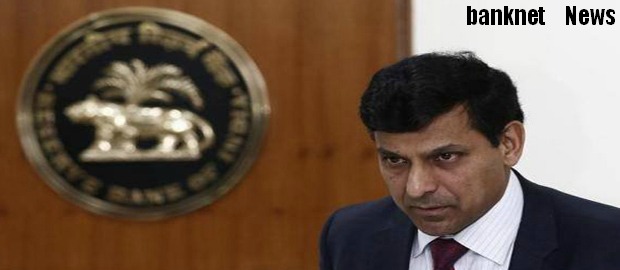

Fourth Bi-Monthly Monetary Policy Statement, 2014-15 By Dr. Raghuram G. Rajan, Governor, RBI - September 30, 2014 - Full Text
Assessment
2. Since the third bi-monthly monetary policy statement of August 2014, global activity has been recovering slowly from the setback in Q1 of 2014, on the back of strengthening consumer spending and gradually improving labour market conditions in advanced economies (AEs) like the United States. However, the Euro area, where growth has stalled in the core economies, continues to be weak. Major emerging market economies (EMEs) continue to struggle with tepid domestic demand and headwinds from structural impediments. With monetary policy in AEs remaining highly accommodative, investor risk appetite has increased and spread to various asset classes. With volatility perhaps excessively low, financial markets have risen to new highs, driving surges of capital flows to EMEs. Apart from concerns about a sudden correction in financial markets if investors misread the timing of a reversal of the US monetary policy stance or if geopolitical tensions intensify, some downside risks to growth also persist, such as a possible further slowdown in the Euro area.
3. Domestic activity appears to have come off somewhat after the stronger-than-expected upturn in Q1 of 2014-15. In Q2, the growth of industrial production slumped in July, as capital goods production followed consumer durables into contraction. Exports cushioned the fall in manufacturing output, with the Reserve Bank’s industrial outlook survey indicating expansion in export orders. Rainfall from the south west monsoon, now expected to be about 12 per cent deficient, will weigh on the kharif crop, mainly due to its uneven spatial distribution. This has resulted in drought-like conditions in some major production zones in the north-west region but also floods in the northern and eastern regions. In the services sector, constituents are moving at varying speeds and the purchasing managers’ index points to uncertainty around future prospects. The recent cautious optimism that is building in the economy on the back of improved business sentiment needs to be placed on solid foundations through a step-up in investment. In this context, the resumption of stalled projects should provide a boost to inventory and capex cycles, while reducing distressed bank loans and revitalising growth.
4. Retail inflation measured by the consumer price index (CPI) came off the vegetable prices-driven spike in July 2014 and eased in all major groups barring food. Large and persistent upside pressures on food prices have resulted in their contribution rising to almost 60 per cent of headline inflation in August. The full impact of the skewed rainfall distribution carries risks to the future path of food inflation, though vegetable prices have fallen recently after the recent spike. CPI inflation excluding food and fuel decelerated to its lowest level in the new series, mainly on account of sharp disinflation in transport and communication and household requisites. Future food prices and the timing and magnitude of held back administered price revisions impart some uncertainty to an otherwise improving inflation outlook, where lower oil prices, a relatively stable currency, and a negative output gap continue to put downward pressure. Base effects will also temper inflation in the next few months only to reverse towards the end of the year. The Reserve Bank will look through base effects.
5. Liquidity conditions have remained broadly balanced through Q2 of 2014-15, except for transient tightness in the second half of July and early August due to delayed Government expenditure. Thereafter, as these expenditures began to flow, liquidity conditions eased. With credit growth falling well below deposit growth in August and September, structural sources of liquidity pressures also eased. The average recourse to liquidity from the Reserve Bank, measured by daily net liquidity injection through LAF, term repo and MSF, decreased from `870 billion in July to `795 billion during August and further to `450 billion during September so far (up to September 28). The Reserve Bank revised its liquidity management framework with effect from September 5, 2014, with more frequent 14-day term repos and daily overnight variable rate repo operations, to ensure flexibility, transparency and predictability in liquidity management operations.
6. Non-food credit growth decelerated in September 2014, the lowest level since June 2001, despite liquidity conditions remaining comfortable and deposit growth remaining normal. Partly, this sharp deceleration is on account of a high base – monetary tightening to curb the exchange market pressures in July-September last year raised interest rates on alternative sources of funds and pushed up the demand for credit from the banking system. Adjusting for these base effects, non-food credit growth would have been around 11 per cent in September 2014. Corporates have also opted to raise financing through alternative sources such as commercial paper, which are significantly larger than a year ago. Finance from other non-bank sources such as foreign direct investment and external commercial borrowing has also increased. Also, a few banks have sold stressed loans to asset reconstruction companies, and so these loans no longer appear as bank credit. Net bank credit is also lower because of repayments of loans by entities that have received payments by government departments and public enterprises, and because oil marketing companies’ borrowing is lower. Finally, the slowdown in credit growth is more pronounced in public sector banks, but how much of this is because of needed bank balance sheet restructuring, repayments of stressed loans, or increased risk aversion is to be established. Going forward, as the investment cycle gathers momentum and overall demand picks up, banks will need to prepare to meet financing requirements as the credit cycle also turns. Equally, given the easy availability of foreign finance, corporations should be wary of being lulled by relative exchange rate stability and neglect to hedge foreign exchange liabilities.
7. Incoming data suggest that the current account deficit, placed at 1.7 per cent of GDP for Q1 of 2014-15 may remain contained in Q2. Over April-August 2014, the trade deficit was narrower than a year ago, notwithstanding a slowdown in export growth in July and August and a strengthening of non-oil non-gold import growth to its highest level since March 2013. The improvement in the trade balance has benefited from the fall in the value of gold imports. Even as the external financing requirement stays moderate, all categories of capital flows remain buoyant. As a result, there has been an accretion to international reserves, even though reserves denominated in US dollars have moderated somewhat in recent weeks, largely because of the strength of the US dollar.
Fourth Bi-Monthly Monetary Policy Statement, 2014-15 - Main Page - Click here
Policy Stance and Rationale- Click here
Banking and Financial Structure - Click here
Financial Markets- Click here
Access to Finance - Click here
RBI Monetary and Credit Policies (1999-2015) - Notifications, Press Releases, Reports - Click here

BANKING

FINANCE

INSURANCE

TECHNOLOGY

Foreign Exchange


